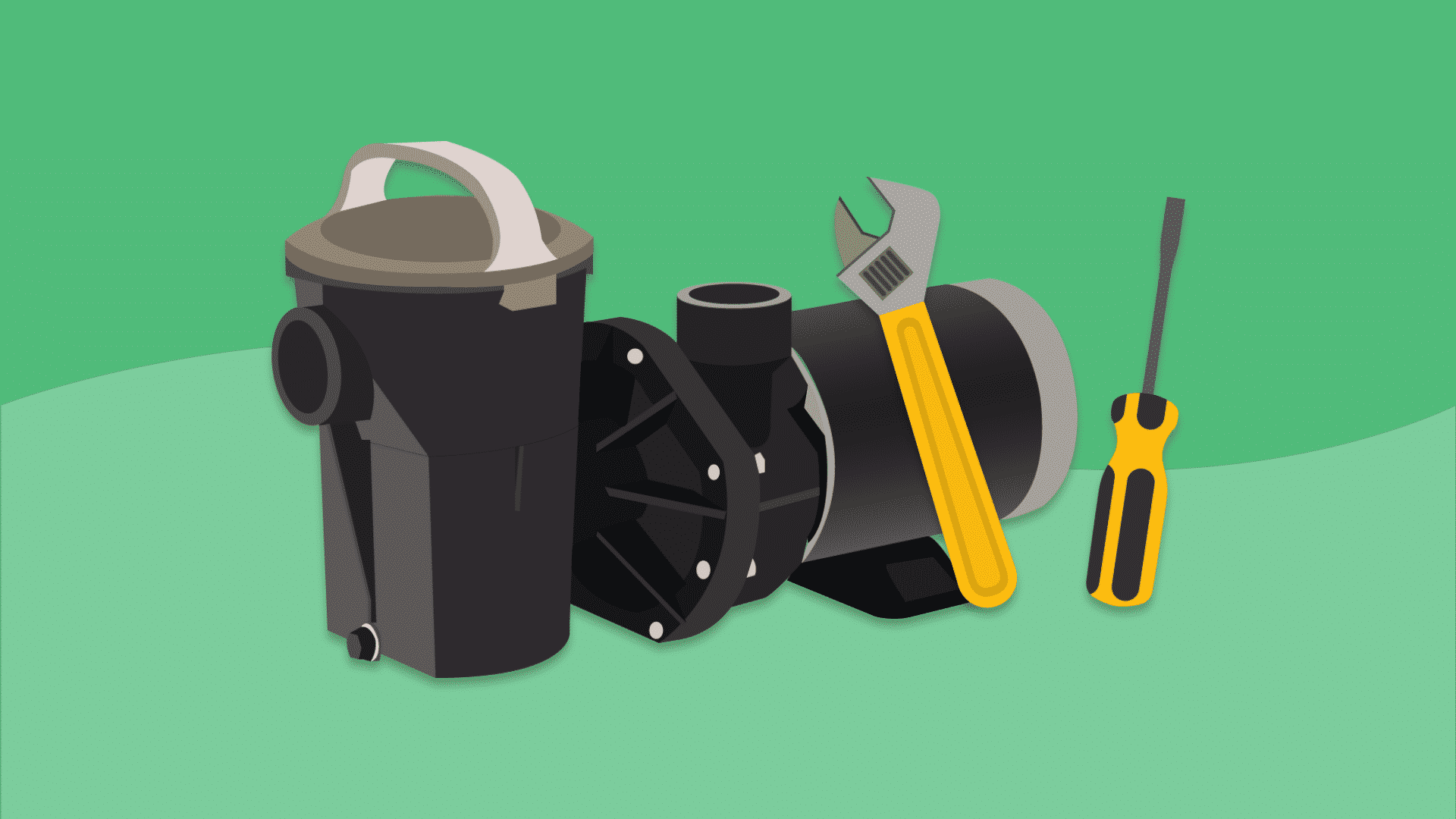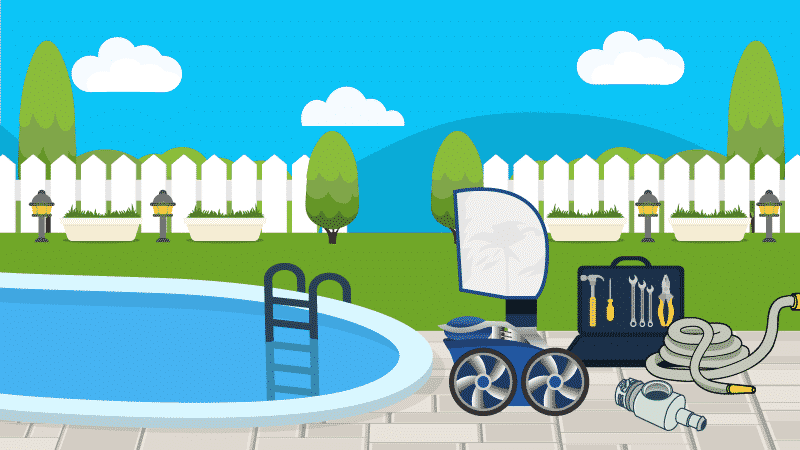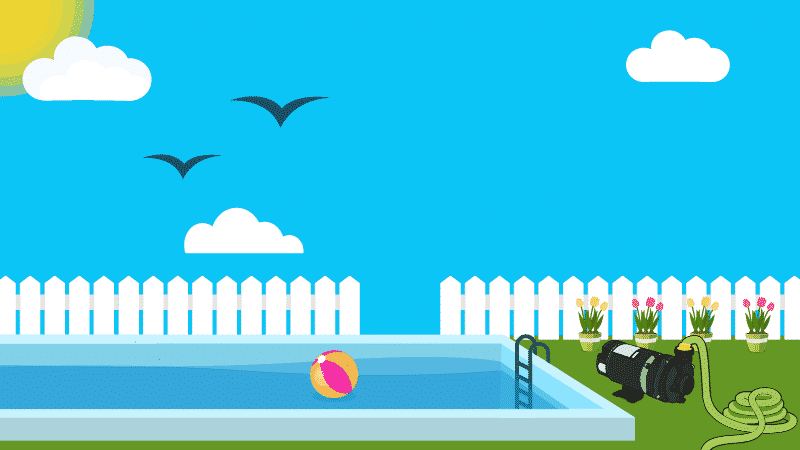How To Get Rid Of Water Bugs In Your Pool
You know your pool is full of chlorine and other chemicals and isn’t meant to support any kind of wildlife. To a lot of creatures, though, your pool looks like a watery haven for them to hang out, eat, and have babies in.
Few things will gross you out like finding water bugs in your pool. When that happens, you need to evict them, and then take steps to keep them from coming back.
Stop wasting time and money with confusing water chemistry and maintenance. Our effortless system guarantees to keep your pool balanced, sanitized, and crystal clear all year. Works for all pools including saltwater.
Exactly as the name suggests, they’re insects that live in or on water. Usually, you’ll find water bugs in ponds and other natural bodies of water. But two types in particular—water boatmen and backswimmers—seem to love swimming pools.
1. Water Boatmen
They may look a little scary, but water boatmen, also known as corixids, aren’t the worst water bugs to have in your pool.

Scientific Designation
These water bugs belong to the family Corixidae (water boatmen) in the order Hemiptera (true bugs).
What Do They Look Like?
Water boatmen are oval-shaped, and usually brown or greenish-brown in color. They have large eyes. They usually don’t grow more than ½ an inch long.
Their rear-most legs are longer than the others, and are fringed with hairs that help it stay afloat and paddle, hence their name. Those legs usually extend forward, past the second set of legs.
They also have wings, and yes, they can and do fly.
What Do They Eat?
Because they eat algae, plant detritus, other water microorganisms, and mosquito larvae, water boatmen are considered beneficial insects. It’s just kind of gross to have them in your pool.
Are They Dangerous?
Not in the least. They’re not poisonous, and they don’t bite. They’re actually pretty docile. You wouldn’t want to keep one as a pet or anything. But as far as insects go, they’re one of the good guys.
How Do You Get Rid of Them?
These particular water bugs in your pool are likely there because there’s also algae in your pool. Remember, water boatmen eat algae. They also lay their eggs in algae. Then a bunch of little baby water boatmen hatch and eat algae.
Don’t see any algae in your pool? It could be that it just hasn’t bloomed to the point where it’s visible—yet. But algae spores are microscopic, so if you see water boatmen in your pool, it’s because they know the pool algae is there before you do.
1. Remove the Water Bugs in Your Pool The easiest way to do that is with a skimmer. Remember, they fly, so they may just take off as soon as you scoop them out of the water.
The question is, should you kill them? You may have seen some advice floating around about killing them by dumping them into a bucket filled with water and cooking oil. This suffocates them, which is a slow, torturous death. Plus, it’s messy.
Sure, they’re just bugs. But remember, they’ve been doing you a favor by eating algae and mosquito larvae. So while they’re gross and all, maybe just relocate them? It’s up to you.
It's a deep and durable leaf net pool skimmer that can collect a lot of debris all in one skimming. It also includes a lifetime guarantee. This is what the pros use!
2. Vacuum the Pool For this step, you’ll want to manually vacuum the pool rather than using an automatic cleaner. Remove as much sediment and debris from the pool as you can.
Be sure to vacuum to waste to keep the dirty water from returning to the pool. That would just defeat the purpose, right?
The weighted triangle pool vacuum head is a great way to clean your pool. The weights on the bottom of the vacuum head help to keep it in place while vacuuming.
3. Brush the Pool Using an algae brush, scrub down the surfaces of your pool—including ladders and steps—to loosen any algae clinging there. This will move it into the water so the shock you’re about to add kills it all.
This brush helps remove dirt, contaminants, bacteria, and algae from porous surfaces. For unpainted concrete or gunite pools only.
4. Test the Water Use either test strips or a liquid test kit to make sure the pH and alkalinity are where they’re supposed to be (between 7.4 and 7.6, and between 100 parts per million (ppm) and 150 ppm, respectively). If they’re not, adjust them until they are. This will ensure the chlorine shock works the way it should.
This complete water testing kit helps keep your pool or hot tub clean and safe to swim in, with easy-to-follow color instructions and all the supplies you need in one box.
5. Shock the Pool This isn’t a regular weekly shock. You’re trying to kill algae, so we recommend at least a double dose of pool shock. Normally, you’d use 1 pound of calcium hypochlorite shock per 10,000 gallons of water. Double that to 2 pounds per 10,000 gallons.
If the water is a darker green, you may need to triple or even quadruple the dose.
Important: Remember to shock your pool at dusk or night. Otherwise, the sun’s rays will burn the chlorine off before it has a chance to work its magic.
This fast-acting, quick-dissolving swimming pool shock kills bacteria, controls algae, and destroys organic contaminants in pools.
6. Run the Pump Now you need to get the shock evenly distributed, and allow it to dissipate so you can use the pool again. Run the pump for at least 8 hours, preferably overnight. And if you triple or quadruple shocked, run it for 24 hours. Test the water to make sure chlorine levels have returned to normal before you swim again.
Tests for 7 important chemistries in seconds: Total Hardness, Total Chlorine, Total Bromine, Free Chlorine, pH, Total Alkalinity, and Cyanuric Acid.
How Do You Keep Them From Returning?
It’s a two-pronged approach: Clean your pool on a regular basis, and keep your chlorine (or other sanitizer) level where it’s supposed to be. This will keep algae out of your pool, which, in turn, will keep the water boatmen out as well.
You may see other advice that says to use an algaecide for this purpose. Our view is, algaecide isn’t necessary if you maintain proper pool chemistry, keep sanitizer levels where they should be, and shock your pool on a regular basis.
If algae can’t grow in your pool, there’s nothing for the water boatmen to eat, and they’ll go somewhere else, never to darken your pool steps again.
NOTE: For a really quick fix for keeping bugs from returning, just use a solar pool cover on your pool when you’re not using it. The cover floats on top of the pools so bugs can’t.
2. Backswimmers
If water boatmen are the good guys, then … yup, you guessed it. Backswimmers are the bad guys.

Scientific Designation
These water bugs belong to the family Notonectidae (backswimmers) in the order Hemiptera (true bugs).
What Do They Look Like?
These water bugs are long, thin, and a light- to medium-brown color. Their back legs are longer than their other legs, and are fringed to help them skim across the water. They also have wings and fly.
They usually don’t grow more than ½ an inch long. Their most distinctive characteristic is that they swim upside-down, which is why they’re called “backswimmers.” Clever people, those bug namers.
They’re often mistaken for water boatmen, so if you see water bugs in your pool and you’re not sure what they are, check to see whether they’re upside-down. If so, you have nasty backswimmers to deal with.
What Do They Eat?
They’re predators, so they eat other bugs, including water boatmen. So just as you probably have water boatmen because you have algae, you probably have backswimmers because you have water boatmen.
Are They Dangerous?
Well, they’re not poisonous, but they do bite. And their bites hurt! They feel like bee stings.
How Do You Get Rid of Them?
They don’t eat algae like water boatmen, but they do lay their eggs in it, so you’ll still want to treat your pool for algae.
You can also use the water-and-oil-in-a-bucket method to kill the existing ones, but again, it’s messy, and if you’re patient, removing their food source is effective in driving them away.
But the best way to get rid of backswimmers is to remove their food supply, which means getting the water boatmen out of the pool, which also entails getting rid of algae.
How Do You Keep Them From Returning?
The same procedure you use to keep water boatmen from returning will also keep backswimmers from coming back. As long as there are water boatmen in your pool, there will also be backswimmers looking for a meal.
Bug Out, Bugs!
If you have water bugs in your pool, they won’t be there much longer. Now you know what tools to use and what steps to follow to get rid of them and keep them from coming back.
Anytime anything invades your pool, whether it’s bugs or algae, it will always come back to keeping your pool clean, keeping the water balanced, and keeping up with your pool maintenance.
Happy Swimming!
3 Ways We Can Help With Your Pool
- The Pool Care Handbook: An illustrated guide to DIY pool care, including water chemistry, maintenance, troubleshooting, and more.
- The Pool Care Video Course: You’ll get 30+ step-by-step videos and a downloadable guide with everything you need to know about pool maintenance.
- The Pool Care App: Enter your water test results. Get a custom treatment plan. Know exactly what chemicals to add to keep your pool clear.


















